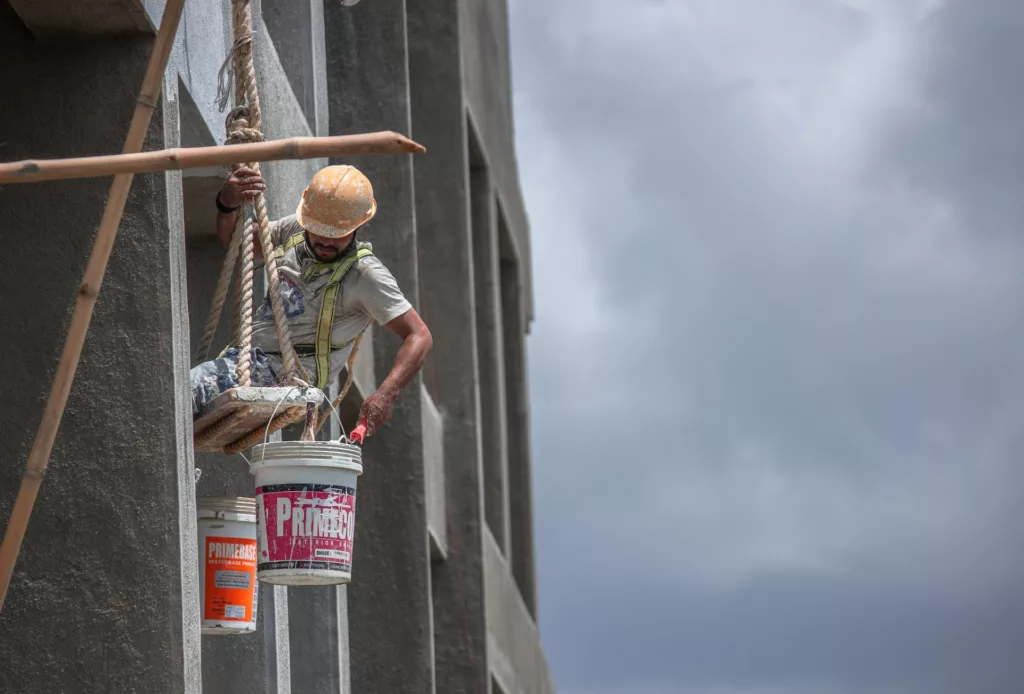Exterior painting is a fantastic way to add curb appeal and new life to your home or commercial property. However, it requires attention to detail, proper planning, and the right techniques to achieve a stunning, long-lasting result. Unfortunately, even a minor oversight during the painting process can lead to issues that may compromise the final outcome.
In this article, we will discuss five common exterior painting mistakes and provide practical tips on how to avoid them. By understanding these pitfalls and employing the appropriate preventative measures, you can ensure a beautiful, lasting finish that not only enhances your property’s appearance but also protects your investment for years to come. So, whether you’re tackling a DIY project or working with a professional painting company, our advice will guide you towards a successful exterior painting transformation.
1. Insufficient Surface Preparation
One of the most common exterior painting mistakes is insufficient surface preparation. A clean, smooth, and well-prepared surface is essential for proper paint adhesion and a long-lasting finish. Skipping on adequate preparation can lead to peeling, cracking, or uneven paint application. To avoid this issue:
- Clean the surface thoroughly by pressure washing or using a scrub brush, mild detergent, and water. This will remove dirt, dust, and mildew that can prevent optimal paint bonding.
- Scrape and sand any loose or peeling paint to create a smooth and even surface.
- Repair any damaged or rotten wood before painting.
- Use a high-quality primer to seal porous surfaces and enhance paint adherence.
2. Painting in Extreme Weather Conditions
Painting in extreme weather conditions, such as rain, high heat, cold temperatures, or high humidity, can impact drying times, paint adhesion, and the overall quality of the finish. To avoid problems related to adverse weather conditions:
- Always check the weather forecast before starting your exterior painting project, especially if rain is expected.
- Avoid painting in direct sunlight, as this can cause the paint to dry too quickly, resulting in brush marks or an uneven finish.
- Follow the manufacturer’s guidelines regarding optimal temperature and humidity levels for applying paint. In general, the recommended temperature range for outdoor painting is between 10°C to 30°C (50°F to 86°F).
3. Utilizing Substandard Paint and Supplies
Trying to save money by choosing low-quality paint and painting supplies can lead to less-than-stellar results, and may require more frequent repainting in the long run. To ensure a beautiful and long-lasting finish:
- Opt for high-quality exterior paints and primers that offer enhanced durability, UV resistance, and protection against mildew and moisture.
- Select the appropriate type of paint for your specific surface, considering factors such as material, sun exposure, and weather conditions.
- Use quality paintbrushes and rollers that are suited for exterior painting. Investing in better tools can result in smoother paint application, improved efficiency, and a superior end result.
- Don’t skimp on the number of paint coats. Two coats of paint are usually recommended for exterior surfaces to ensure proper coverage and long-term durability.
4. Inadequate Attention to Detail
Exterior painting requires a meticulous approach and attention to detail to achieve a polished and visually appealing result. Carelessness or rushing through the process can lead to issues like uneven paint coverage, visible brush marks, or unsightly paint overspray. To avoid these problems:
- Take your time and approach each step of the painting process with care and precision.
Start by painting hard-to-reach areas and then move on to the larger sections. - Use painter’s tape to protect windows, doors, and edges that should not be painted. This will ensure clean lines and a professional look.
- Consider using paint sprayers for a more even paint application on large surfaces, but always practice proper technique to avoid overspray.
5. Neglecting Proper Safety Precautions
Safety should always be a priority when undertaking any home or commercial exterior painting project. Overlooking the importance of safety can lead to falls, injuries, and other accidents. Ensure a safe painting experience by:
- Wearing appropriate protective gear, such as gloves, safety glasses, and closed-toe shoes.
- Using sturdy and well-maintained ladders or scaffolding that are rated for your weight and the task at hand.
- Ensuring ladders are set up on stable, level ground and following proper ladder safety guidelines.
- Staying aware of your surroundings and using caution when working around power lines or other electrical hazards.
Elevate Your Property with Xico Enterprises Inc.
Avoiding the common exterior painting mistakes outlined in this article is crucial for achieving a stunning, long-lasting finish that enhances your property’s curb appeal. By choosing us for your exterior painting needs, you can trust that we will pay attention to every detail, from meticulous surface preparation to selecting the highest quality materials and ensuring proper safety precautions. Whether you’re a DIY enthusiast or hiring a professional, ensuring these best practices are followed will result in a beautiful, long-lasting paint job that stands the test of time.
At Xico Enterprises Inc., our team of experienced professionals is dedicated to providing top-quality exterior painting services while adhering to the highest industry standards. Contact us today for a free consultation and let our expert team transform your home or business exterior with exceptional craftsmanship, ensuring a beautiful, lasting result that you can be proud of. Trust us for an unmatched painting experience and a finished product that stands the test of time. Book your appointment today to get started!


